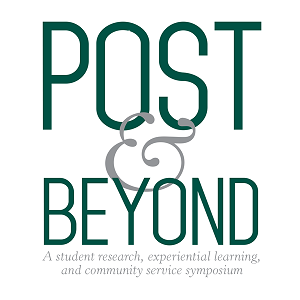Pregnancy and Lactation Associated Osteoporosis: Increasing Awareness as the First Step
Faculty Mentor
Barbara Ann M. Messina
Area of Research
Nursing
Major
Nursing
Description
Introduction: Pregnancy and Lactation Associated Osteoporosis is a rare condition that was first reported in 1955 by Nordin & Roper. This condition affects pregnant and lactating women causing low bone mineral density resulting in increased risk of fractures. Because of the insidious presentation of this condition, it is often undiagnosed. As a result, there is a scarcity of research, and the exact incidence and prevalence of this condition is unknown. However, it is believed to effect 4 - 8 per 100,000 women (Kovacs, 2016). Purpose: To increase healthcare provider awareness by providing an overview and discussion on what constitutes pregnancy and lactation associated with osteoporosis, the signs and symptoms that may indicate the condition to facilitate early diagnosis and treatment. Methods: Conducted systematic analysis by searching through databases, PubMed, PubMed Central; National Library of Science, CINAHL and Embase. All articles were critiqued, and the data was synthesized. Findings: Signs and symptoms such as lower back or pelvic pain in the late pregnancy and lactation period should prompt a second review of the patients’ medical history and medication regimen. Conclusion: Pregnancy and Lactation Associated Osteoporosis can only be better understood if there is an increased awareness of the condition. Increased awareness will provide a greater data pool which can be utilized for foster research and add to the development of evidence-based practice screening tools. All of which can be utilized to initiate early treatment interventions to reduce or eliminate chronic medical conditions, chronic pain, and/or permanent physical mobility issues.
Pregnancy and Lactation Associated Osteoporosis: Increasing Awareness as the First Step
Introduction: Pregnancy and Lactation Associated Osteoporosis is a rare condition that was first reported in 1955 by Nordin & Roper. This condition affects pregnant and lactating women causing low bone mineral density resulting in increased risk of fractures. Because of the insidious presentation of this condition, it is often undiagnosed. As a result, there is a scarcity of research, and the exact incidence and prevalence of this condition is unknown. However, it is believed to effect 4 - 8 per 100,000 women (Kovacs, 2016). Purpose: To increase healthcare provider awareness by providing an overview and discussion on what constitutes pregnancy and lactation associated with osteoporosis, the signs and symptoms that may indicate the condition to facilitate early diagnosis and treatment. Methods: Conducted systematic analysis by searching through databases, PubMed, PubMed Central; National Library of Science, CINAHL and Embase. All articles were critiqued, and the data was synthesized. Findings: Signs and symptoms such as lower back or pelvic pain in the late pregnancy and lactation period should prompt a second review of the patients’ medical history and medication regimen. Conclusion: Pregnancy and Lactation Associated Osteoporosis can only be better understood if there is an increased awareness of the condition. Increased awareness will provide a greater data pool which can be utilized for foster research and add to the development of evidence-based practice screening tools. All of which can be utilized to initiate early treatment interventions to reduce or eliminate chronic medical conditions, chronic pain, and/or permanent physical mobility issues.

